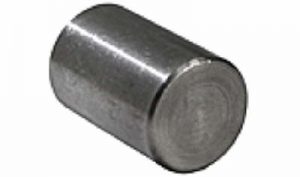Top 5 Basic Elements Of Dowel Pins
A dowel pin is essentially a cylindrical alloy rod that is mainly used in connecting parts that need to be precisely on top of each other in bigger machinery. In order for these parts to perform their task efficiently, their construction and strength are critical. This is why the manufacturing specifications for dowel pins are standardized by the American Society of Mechanical Engineers and are as follows:
 Accepted materials
Accepted materials
More often than not, dowel pins are made of a steel alloy that incorporates minor percentages of sulfur and phosphorus, 0.04% and 0.05% to be more precise. However, because the pins are used in several industries – including water treatment, pump manufacturing, steel fabrication and railroad construction – they are also available in other materials, such as bras, 18-8 and 316 stainless steel, aluminum and titanium.
Design
Irrespective of the metal alloy it incorporates, the pins need to undergo a hardening process known as austenitization. This procedure is commonly used on iron-based metals and implies subjecting them to an excessive temperature that allows the alteration of the crystalline structure to austentite (gamma-iron).
Hardness factor
The role of the austenitization process is to achieve a certain level hardness for the interior and another for the exterior of the dowel pin. To put it simply, according to ASME's standards a dowel pin has been manufactured correctly if it has a hardness of at least 60 on the case and a level of solidity between 47 and 58 for the core. The hardness is typically measured on the Rockwell C scale, a system that is employed to calculate the steel's indention using a pointed diamond cone. Naturally, harder steel alloys are less indented compared to their softer counterparts.
Crowned end specifications
The crowned or rounded end of the dowel pin is obtained via a process known as radiusing, which refers to the removal of the sharp edges and evening its overall surface in order to make it easier to work with. Here manufacturers need to make sure that the crown's height and radius are according to the ASME's specifications. For instance, a 1/8" dowel pin must have a crown height of 0.041" and a crown radius of 0.016".
Chamfered end measurements
The chamfered or the slope end of a dowel pin must have an angle between 4 and 16 degrees to be considered suitable for use. The inclinations are usually specified via minimum and maximum point diameters. Keep in mind that because dowel pins are available in various sizes ranging from 1/8'' to 1", it means that the aforementioned points vary as well.
When shopping around for dowel pins, you should be should pay attention to this data as in the end the diameters of the hole and the pin must match precisely. In case the pins are too small, they will slide out of the hole, whereas larger pins will simply not fit in. As a side note, it is advisable to utilize pins with a length higher than the holes' depth, the remaining segment being commonly known as 'engagement'.
About the Author

Started my career in the fastener world in 1969 at, Parker Kalon Corp. a NJ based screw manufacturer located in Clifton, NJ working in inventory control, scheduling secondary production and concluding there in purchasing. In 1971 I accepted a sales position at Star Stainless Screw Co., Totowa, NJ working in inside sales and later as an outside salesman, having a successful career at Star I had the desire with a friend to start our own fastener distribution company in 1980 named: Divspec, Kenilworth, NJ. This was a successful adventure but ended in 1985 with me starting Melfast in August 1985 and have stayed competitive and successful to date. Melfast serves the OEM market with approximately 400 accounts nationally.